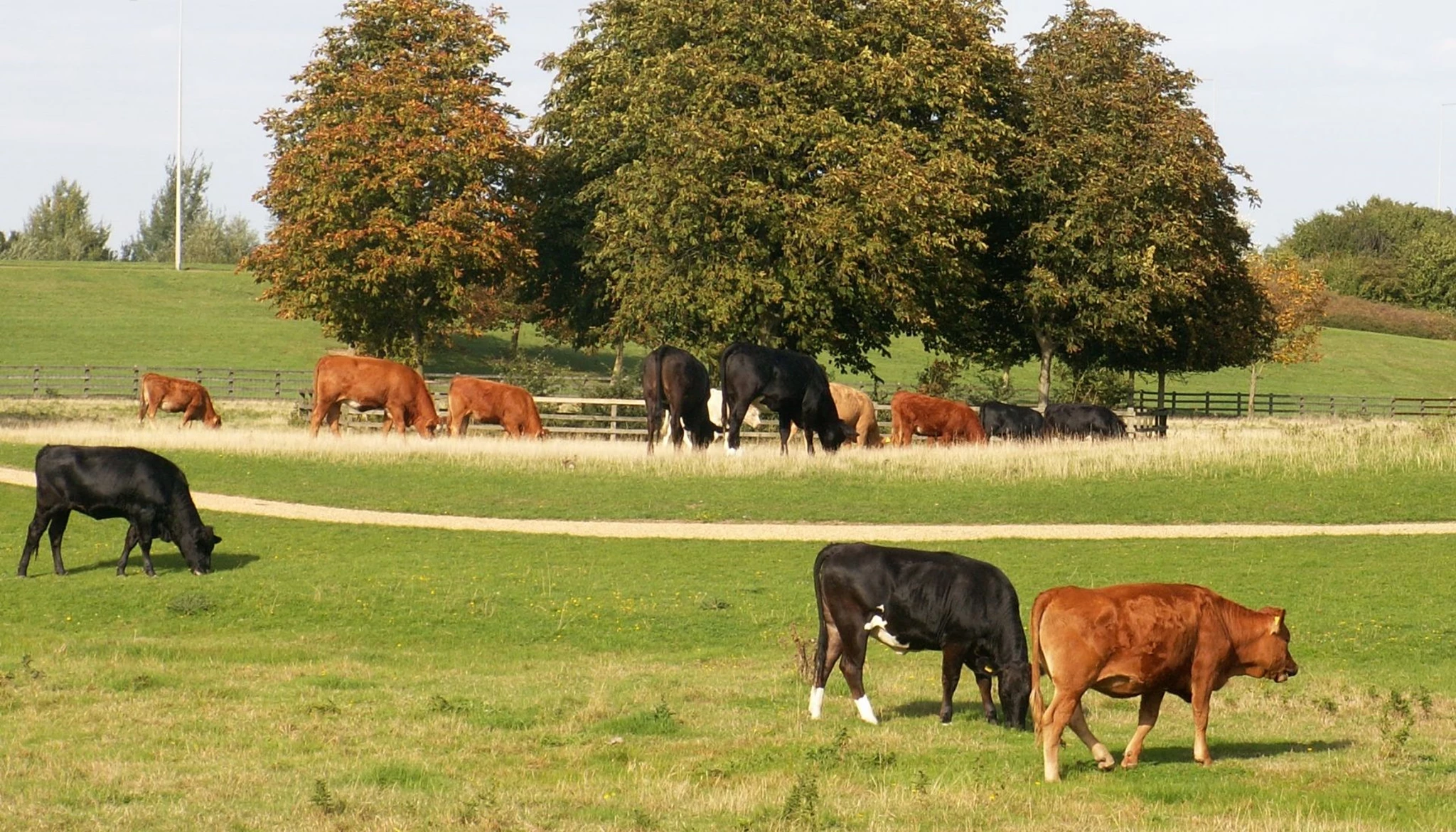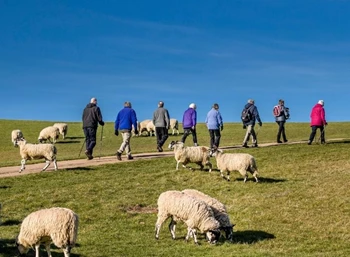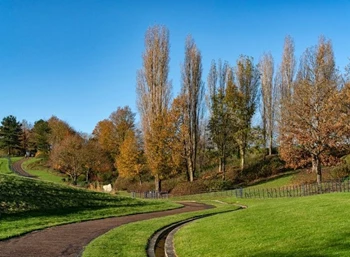Cattle Grazing

Milton Keynes is unique in many ways, but having livestock in the parks is one of the town’s most unusual and treasured features.
When are you most likely to see cattle in the fields?
From early spring to the autumn, the Trust has around 350 to 500 cattle out and about in our fields. They will be moved to different fields to ensure they have sufficient food and reduce the impact on the land.
This figure reduces dramatically in the winter. In addition to protecting the cattle from our harshest weather and preventing the ground getting heavily poached, many of the grazing fields are in floodplains, such as the Ouse and Ouzel valley so could not be used. The animals are taken to the farm and housed in barns over the winter months.
Why do we have Cattle?
The cattle help us to maintain wildlife habitats, creating better conditions for a great variety of wild flowers which in turn attract many pollinating insects such as butterflies, bees and hoverflies as well as larger animals and birds. Without grazing livestock we would need to use heavy machinery more regularly to mow the grass and then remove the cuttings. If the cut grass is not removed, the nutrients enrich the soil, promoting strong grasses that would outcompete the wildflowers.
Grazing with cattle is also more sustainable and cost effective than cutting the grass as it means that we do not need to use machinery as frequently.
The cattle help us to maintain our historical sites. We are lucky that we have many ancient monuments and features within the parks, including medieval villages. The cattle help us keep the grass down in these areas, meaning that we are less likely to damage the landscape and our shared heritage.
Lastly, the cattle provide us with a connection to our farming heritage. Until relatively recently Milton Keynes was largely fields used for farming. We continue this cultural heritage and believe that having cattle in our parks brings delight, understanding and connection to animals and farming.
Who looks after the cattle?
We work with our farming partner to look after our cattle. They are a very experienced farmer with a very high level of animal husbandry credentials. Our Ranger team and volunteers also keep an eye on our livestock.
Why should I do if I see injured livestock?
Our farmer and ranger team monitor our livestock regularly but if you are concerned about one of our animals, please send the field location and any details to communityranger@theparkstrust.com.
How can you keep the cattle and yourself safe?
The cattle we own are chosen partly for the general calmness of breeds. However, the cattle we do have are young and can be inquisitive so they may come towards you, especially in the Spring when they are not so used to people.
If you are unsure as to how the cattle may react, one action we suggest is that you stay just inside the field by the gate for a short time, where the cattle can observe you and you can then see how they react. If you really feel uncomfortable about going into a field, then you may be best to find an alternative route.
Keep dogs on leads – this is the biggest problem that we face in caring for all our livestock. We have plenty of parks where dogs can be off leads and roam, but we ask all dog owners to ensure their dogs are on a lead when they are entering fields used for grazing. Cattle can be disturbed by dogs and their behaviour can then change quickly. Most of the incidents we have had have been caused when dog owners who regularly use a field assume that it will be empty or that previous cattle have not reacted to a dog. Cattle are moved regularly from one field to another as grass availability dictates, so part of a field that was empty just hours before may now have livestock on it.
Is having cattle environmentally sustainable?
Our cattle are predominately grass fed - they eat the grass found within the open fields over spring, summer and autumn and then eat the hay that we produce over the winter, only getting supplementary feeds when needed. The grass in our fields is not artificially fed with fertilisers and manure is only spread in sections of the Passenham fields.
We think this is an ethical way to farm and produce food for the food chain, rather than livestock being reared and kept by highly commercial methods such as intensive beef units. In such intensive farming cattle are kept and fattened in industrial-scale units (e.g. indoor or outdoor pens), where livestock have little or no access to pasture and are fed grass alternatives. Although commercially run, the objective of our farming enterprise is not high profits. Our objective is to manage the land in a balanced way, that helps develop the ecology of the fields and its surrounding area using traditional grazing and farming methods.








